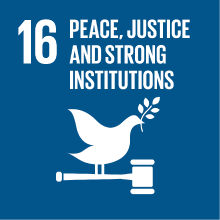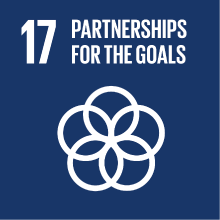HISTORY OF EASTERN EUROPE
- Academic year
- 2023/2024 Syllabus of previous years
- Official course title
- STORIA DELL'EUROPA ORIENTALE
- Course code
- LM1390 (AF:459883 AR:251330)
- Teaching language
- Italian
- Modality
- On campus classes
- ECTS credits
- 6
- Degree level
- Master's Degree Programme (DM270)
- Academic Discipline
- M-STO/03
- Period
- 2nd Semester
- Course year
- 1
- Moodle
- Go to Moodle page
Contribution of the course to the overall degree programme goals
Expected learning outcomes
- to familiarize with and to be able to understand some relevant cases of exhumations from mass graves, which took place in Eastern Europe during the 20th century
- to be able to apply this knowledge to a critical understanding of the present time in terms of continuities/changes and public use of history
- to become acquainted with the most recent historiographical debate around notions like "necropolitics", "politics of remembrance", and "instrumentalization of history"
- to refine your communication skills, both oral and written
Pre-requirements
Contents
- symbolic and political implications of exhumations
- case studies of exhumation in Russia, former Yugoslavia, Greece, Lithuania, Ukraine, Poland, Romania
- comparison in a global perspective (Latin America, Spain)
Referral texts
- Irina Paperno, Exhuming the bodies of Soviet Terror, in “Representations”, vol. 75 (2001), n. 1, pp. 89-118.
- Pamela Ballinger, Exhumed histories: Trieste and the politics of (exclusive) victimhood, in “Journal of Southern Europe and the Balkans”, 6:2 (2004), 145-159.
- Luis Fondebrider, Forensic anthropology and the investigation of Political violence: lessons learned from Latin America and the Balkans, in: Francisco Ferrándiz, Antonius C. G. M. Robben (eds), Necropolitics. Mass Graves and Exhumations in the Age of Human Rights, University of Pennsylvania Press, Philadelphia 2015, pp. 41-51.
- Sara E. Wagner, The Quandaries of Partial and commingled Remains: Srebrenica’s missing and Korean War casualties compared, in ivi, pp. 119-139.
- Katerina Stefatos and Iosif Kovras Buried silences of the greek civil War, ivi, pp. 161-184.
- Marije Hristova and Monika Żychlińska, Mass grave exhumations as patriotic retreat: sacralisation and militarisation in the remembrance of the ‘cursed soldiers’, in “Human Remains and Violence”, vol. 6, n. 2 (2020), pp. 42–60.
- Viacheslav Bitiutckii, State secrets and concealed bodies: exhumations in Soviet-era victims in contemporary Russia, in Élisabeth Anstett and Jean-Marc Dreyfus (eds), Human Remains and Identification. Mass violence, genocide, and the ‘forensic turn’, Manchester University Press, Manchester, 2015, pp. 98-116.
- Mihai Stelian Rusu, Staging Death: Christofascist Necropolitics during the National Legionary State in Romania, 1940–1941, Nationalities Papers / Volume 49 / Issue 3 / May 2021, pp. 576-589.
- James Mark, What Remains? Anti-Communism, Forensic Archaeology, and the Retelling of the National Past in Lithuania and Romania, Past & Present, Volume 206, Issue Supplement 5, 2010, pp. 276–300, https://doi.org/10.1093/pastj/gtq021
- Karel C. Berkhoff, Bykivnia: how grave robbers, activists, and foreigners ended official silence about Stalin’s mass graves near Kiev, in Élisabeth Anstett, Jean-Marc Dreyfus (eds), Human remains and identification. Mass violence, genocide, and the 'forensic turn', Manchester U.P., Manchester 2015, 59-82.
- Francisco Ferrándiz, MarieHristova, Mass Grave Exhumation Sites as Agonistic Fora: A Comparative Study Of Spain, Poland and Bosnia, in Repensar el pasado: La memoria (trans)cultural Europea. Ed. by Johanna Vollmeyer and Marta Fernández Bueno. Madrid: Dykinson, pp. 101-122.
Assessment methods
1. Group presentations (about 20 minutes) on a text in the syllabus.
The aim is to evaluate the oral communication skills, as well as the ability to work synergically with other students (10% of the final grade);
2. Written test (90% of the final grade)
The examination has three main goals:
1) to verifying the knowledge of the main historical facts and processes, as well as the most relevant personalities, with relation to the treated topics
2) to verify the analytical skills and the ability of the student to formulate critical reflections about the historiographical issues emerged during the lessons
3) to verify the knowledge of some elements of historical comparison in the framework of the East-Central and South-East European space.
The written examination (duration: 1½ hours) also aims at verifying the written communicative skills of the student.
Due to the COVID-19 emergency, the test could take place on-line, through the Moodle platform. Please, check the communications about this regard on the Moodle-section dedicated to this course.
For those who do not attend classes:
only the written examination (see above, point 2).
Type of exam
Teaching methods
Further information
2030 Agenda for Sustainable Development Goals
This subject deals with topics related to the macro-area "International cooperation" and contributes to the achievement of one or more goals of U. N. Agenda for Sustainable Development


